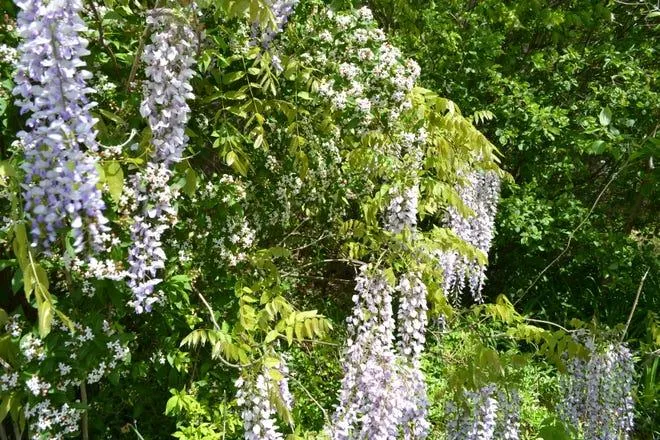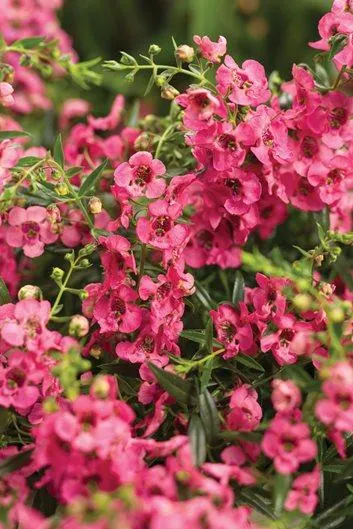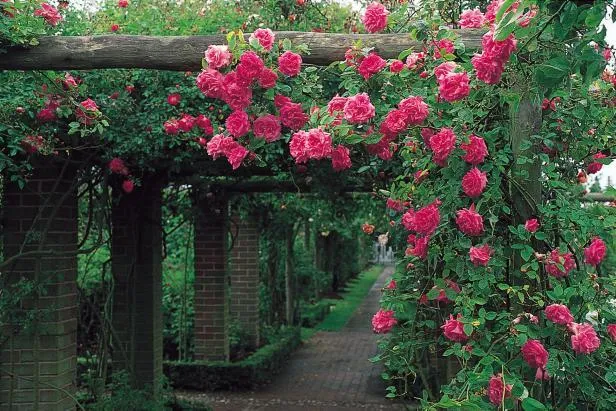The Best Flowering Cascading Plants for Your Home
If you’re looking to add some vertical interest and beauty to your garden or home, cascading plants are a great option to consider. In this article, I’ll discuss some of the top flowering cascading plants that provide lovely foliage and blooms as they trail down from containers, hanging baskets, or ledges. Whether you have a patio, balcony, or indoor space, there are cascading plants that will work well for your needs.
Petunias
Petunias are one of the most popular cascading plants due to their abundant flowering all season long. They come in a vast array of colors including reds, pinks, purples, and whites. Petunias thrive in full sun and average soil. They’ll trail gracefully over the edges of containers, breaking the monotony of upright plant shapes. From my experience maintaining an annual garden, petunias are very hardy plants that continue flowering nonstop from early summer until frost.
One of the best aspects of petunias is their low maintenance needs. Once established, they typically don’t require much additional watering as long as they receive at least 6 hours of direct sun each day. Deadheading spent blooms also encourages more flowering. You can find petunias in many varieties like Wave, Supertunia, and Unifi that provide large, unique flowers on vigorous vines.
Lantana
- Lantanas produce colorful clusters of small flowers in shades of yellow, orange, pink, red, and purple.
- These heat-loving plants thrive in zones 9-11 but can also be grown as an annual elsewhere.
- The flowers attract butterflies and hummingbirds to the garden. Lantana has a somewhat shrubby growth habit but forms cascading vines as it spills over containers.
For maximum flowering, situate lantana in full sun with well-draining soil. It’s drought tolerant once established and deer resistant too. The foliage emits a slight fruity scent. Lantana spreads rapidly so give it room to cascade freely without being confined in too small a space.
Bacopa
For a more delicate,trailing choice, consider bacopa (Sutera cordata). Its thin vines are covered with small,star-shaped white,pink, or purple flowers in summer. Bacopa prefers partial shade and constant moisture to thrive. It’s a great pick for shaded patios or areas underneath trees. The fine-textured foliage forms a lovely backdrop for the petite blooms. Bacopa spreads quickly to drape attractively over the edges of containers.

While it may need more coddling than hardier selections, bacopa offers a graceful, feminine touch perfect for peaceful garden nooks. Deadheading is helpful to promote reblooming. Cut stems back severely after flowering to encourage bushier new growth. Bacopa makes an ideal pairing planted beside tougher cascading plants that can support its trailing stems.
Torenia
Also called wishbone flower or bush violet, torenia is prized for its colorful trumpets blossoms adorning mounds of delicate green foliage. Blooms usually appear in shades of blue, pink, purple, orange or white. Torenia thrives in partial shade to full sun and regular watering.
A bigger challenge with torenia is that the stems tend to sprawl instead of cascading neatly unless given support. Staking, nearby plants or hanging baskets are needed for structure unless you want a more floppy jungly look. It’s also heavier blooming when sited in partial shade versus full sun. Still, few other cascading flowers can match the whimsical charm of torenia’s cheery trumpets.
Begonias
For indoor cascading plants with colorful leaves and flowers, look no further than begonias. Wax begonias have soft green or reddish leaves and dangling clusters of small pink or white blooms. Fibrous begonias form long vines covered in heart shaped leaves streaked or edged in shades like red, pink, dark green and bronze.
Both wax and fibrous begonias prefer partial shaded spots and frequent watering to thrive indoors. They’re excellent additions to hanging baskets or containers on patios, where you can appreciate their bold foliage and flowers during the summer months. Begonias also naturalize easily outdoors in zones 8-11 if temperatures stay consistently warm.

Other Top Cascading Plant Options:
– German ivy – heart shaped green leaves that vine attractively;
– Grape Ivy – deep green leaves with variegated white edges;
– Nasturtium – colorful edible flowers and round foliage;
– Fuschia – pendulous flowers in unique colors; needs consistently moist soil;
– Ivy geranium – fragrant green leaves edged in variegated colors, small flowers.

In summary, my top picks for flowering cascading plants would be petunias, lantanas, and begonias based on their low maintenance needs and ability to thrive in various growing conditions. While bacopa, torenia and fuschias offer lovely blooms too, they may require more upkeep. Consider your space, climate and skill level when choosing the best cascading plants for your specific needs.
With a little trial and error, you can create beautiful draping vines through your yard, patio or balcony using a few of these hardy flowing plants. I hope this list gives you some new cascading plant ideas to explore adding flowers and greenery to your outdoor spaces vertically for a curated look. Let me know if you have any other questions!
Characteristics of Popular Flowering Cascade Plants
| Plant | Light Needs | Bloom Time | Size | Care Level |
|---|---|---|---|---|
| Wandering Jew | Low to Medium | Spring to Fall | Up to 3 feet | Easy |
| Petunias | Full Sun | Spring to Fall | Up to 2 feet | Easy |
| Begonias | Medium to High | Spring to Fall | Up to 2 feet | Moderate |
| Impatiens | Medium to High | Spring to Fall | Up to 1.5 feet | Easy |
| Vinca | Partial Shade to Sun | Spring to Fall | Up to 1 foot | Easy |
| Million Bells | Medium | Spring to Summer | Up to 1 foot | Easy |
FAQ
-
What kinds of plants tend to cascade?
Basically, there are a few types of plants that sort of hang down and flow over the sides of pots or containers in a sort of cascading or trailing way. Ivy, nicotiana, fuchsias, petunias, and begonias are some common flowers that will kinda spill over edges.
-
How long do cascading plants grow?
A lot of cascading plants, like ivy or nicotiana, will continue growing longer and longer vines throughout the season if the conditions are good. I guess it depends on the variety, but some can reach several feet long by the end of summer. At the same time, petunias or fuchsias may only cascade down a foot or less.
-
Do they require special care?
For the most part, cascading plants don’t need drastically different care than other flowers. You just have to give them something high up to grow over, like a balcony railing or ledge. They also demand well-draining soil so they don’t get root rot from sitting in wet stuff. Staking may help direct the stems at first.

-
How can I encourage more prolific cascading?
To stimulate extra long vines on draping plants, it appears giving them plenty of sunshine and fertilizing regularly helps. However, restricting roots slightly by using confined planters might paradoxically cause more vigorous top growth too. Speaking of planters, hanging baskets are fantastic for maximizing cascade effect.
-
Do diseases affect cascading flowers?
Unfortunately, cascading plant varieties can be prone to some of the same issues as other flowers. Powdery mildew shows up a lot in ivy and fuzzy begonias. Meanwhile, nicotiana is highly susceptible to aphids. Caring for soil health and keeping foliage dry goes a long way in prevention. It’s also wise to isolate any sickly plants as fast as signs occur.
-
What’s the best way to showcase them?
To truly admire a wonderful weeping or cascading display, think vertical. Tiered garden structures, arched trellises, and tall hanging baskets put flowing vines in the spotlight. You could also train growth up and over an arbor entrance or let it spill attractively from upper-level containers. It’s amazing how dramatically plant placement can transform a space!
